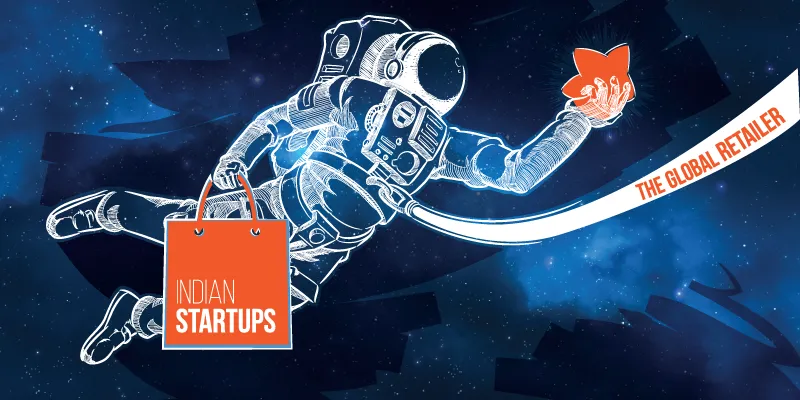The Future is here at Lowe’s: The global retailer could take Indian startups to space
How does one make a statement in the world of innovation? Too many announcements about innovation have been made without a road map to the future. But every now and then, someone makes a statement that can be felt in space. These men and women of the millennial age make Isaac Asimov’s Foundation their own. In Foundation, the protagonist sets up an institute to preserve knowledge in a new planet after predicting that the old world would collapse under its own weight. This is the bold approach taken by Lowe’s Innovation Labs, a subsidiary of Lowe’s, a US-based home improvement retailer with annual revenues of $56 billion. What’s more the company wants to make India the launch pad of many ideas.
Its innovation lab is on to some whacky ideas, literally! What does one say to robots greeting and guiding customers through a Lowe’s store in California? They use graphic comics that build the narrative of the future consumer where stories are cleverly tied to technology that offer seamless experiences. Boldly, these comics are also given to their board members in an effort to convince them that the “Future of Retail” is in experimenting with transformative technology to make innovation real.
At the centre of this is Kyle Nel, no relative of Kylo Ren, the antagonist in the new Star Wars trilogy. Our protagonist drives research and development, at Lowe’s Innovation Labs, and his job is to turn sci-fi into reality.
- To Lowe’s credit, they have backed this crazy method of innovation, with millions of dollars, in technologies such as machine learning, robotics, data science, virtual reality, gaming and neuroscience. To make it even better, Lowe’s Innovation Labs is going to work with startups in India, building these technologies to provide a global network of knowledge sharing for the retailer.
- Lowe’s is betting big on 3D-Printing, it plans to take this technology to space with an aeronautical firm called Made in Space. 3D-Printing in zero gravity is still under research. It can help astronauts make small parts and tools, which are necessary to increase the longevity of the mission. Things like ratchet wench and spanners are common tools that are needed for the maintenance crew.

“Retailing is changing forever because consumers are online and making choices based on content available on the Web. Trade data generated from a single store is not enough for a company to innovate,” says Kyle Nel, Executive Director of Lowe’s Innovation Labs. He adds that these new customers are the archetype of the digital economy where traditional market research cannot pin-point their behaviour.
Nel has a data science back ground and has delved deep in to converging neuroscience and sociology to understand customer reactions to certain product categories. For example, at the Labs, research is based on studying brain neural patterns of the consumer when he or she is shown a product. Of course, people sign up to be part of this research. Now combine trade data, with unstructured data, from the Net, and data generated from Lowe’s social research, and you have a powerful grid of what people want. “This convergence of marketing, technology and the narrative is what we bring to the table and work with startups to build shopping experiences for the consumer,” says Nel.
Indian retailers like the Future Group and Reliance Retail are yet to enter this phase. They are yet to go beyond trade data to make sense of consumer demographics and their habits. However, it is the penetration of the digital economy that drives such experiments. India still thrives on price-sensitive experiences with mom-and-pop stores dominating the country. Soon, technology will morph in its own way, in India, to offer seamless experiences to consumers.
Startups like Wooplr and Voonik are trying to solve fashion retail discovery by using technology to map consumer behaviour to store catalogues. But there is nothing on the scale of Lowe’s yet.
- Lowe’s Innovation Labs will be different from what is happening at the Target Accelerator, in India. At Target India, the emphasis has been on getting startups to ramp up their technology to Target’s needs, which is mostly to help in omni-channel retailing and current trends like mobility, e-commerce, and Big Data. At Lowe’s, it will be about working on those broad futuristic themes.

The burning question is whether these “innovation sessions” lead to buyouts.
Target India has taken small equity in a couple of startups that have qualified as their vendors. For Lowe’s, at the moment, it is still about ideas. The great news is that these global retailers are betting on innovation from India to support their international operations.
How do all these technologies fit in? Obviously, Paul Ramsay, the CIO of Lowe’s would have to figure it out with IT vendors and the large product companies.
The Future
Here is how we look at it. You are driving in your car; you get a message on your Android watch that a set of ten essential carpentry tools are available at a 40 per cent mark down. You beam the message from your phone on to the telematics unit of the car to find the quickest route to the retail store or you will use the voice-based telematics unit to block the tool set for you (setting a time limit to pick the item). You arrive at the store only to be greeted by a robot with a catalogue, which pin-points the exact location of the item. It knows this because it has collected information from the app in the Android watch. But, before you walk away, the robot makes suggestions on ancillary items – like paint or Emery paper or varnish – that go well with the carpentry tools. You order those additional items, with the robot, and by the time you walk to the carpentry department, the items are packed and ready for you to carry home. You pay the store with the digital wallet in your phone or watch. However, there is one more item to be picked up, a socket for your paint gun. The part, if unavailable, can be 3D-printed and sent home in four hours through a courier. It saves a week of shipping from the component manufacturer. The future just got here faster with this model.
“For such technologies to take shape, there has to be an overhaul in IT systems and infrastructure. It needs to be readily deployable and will need the entire organisation to overhaul the supply chain to an on demand model,” says S D Shibulal, founder and ex-CEO of Infosys.
In the end, these are not mad-scientists wanting to experiment upon the unsuspecting world. These are ordinary people looking at extra-ordinary technologies that can change the way the human race consumes products in the future. Kyle’s team, at Lowe’s, are the electric-warriors of a new technology race. Only time will tell between reality and fiction. For now, it is a battle between the dreamers and the stock pickers. Who gets the Board’s attention is the question.







